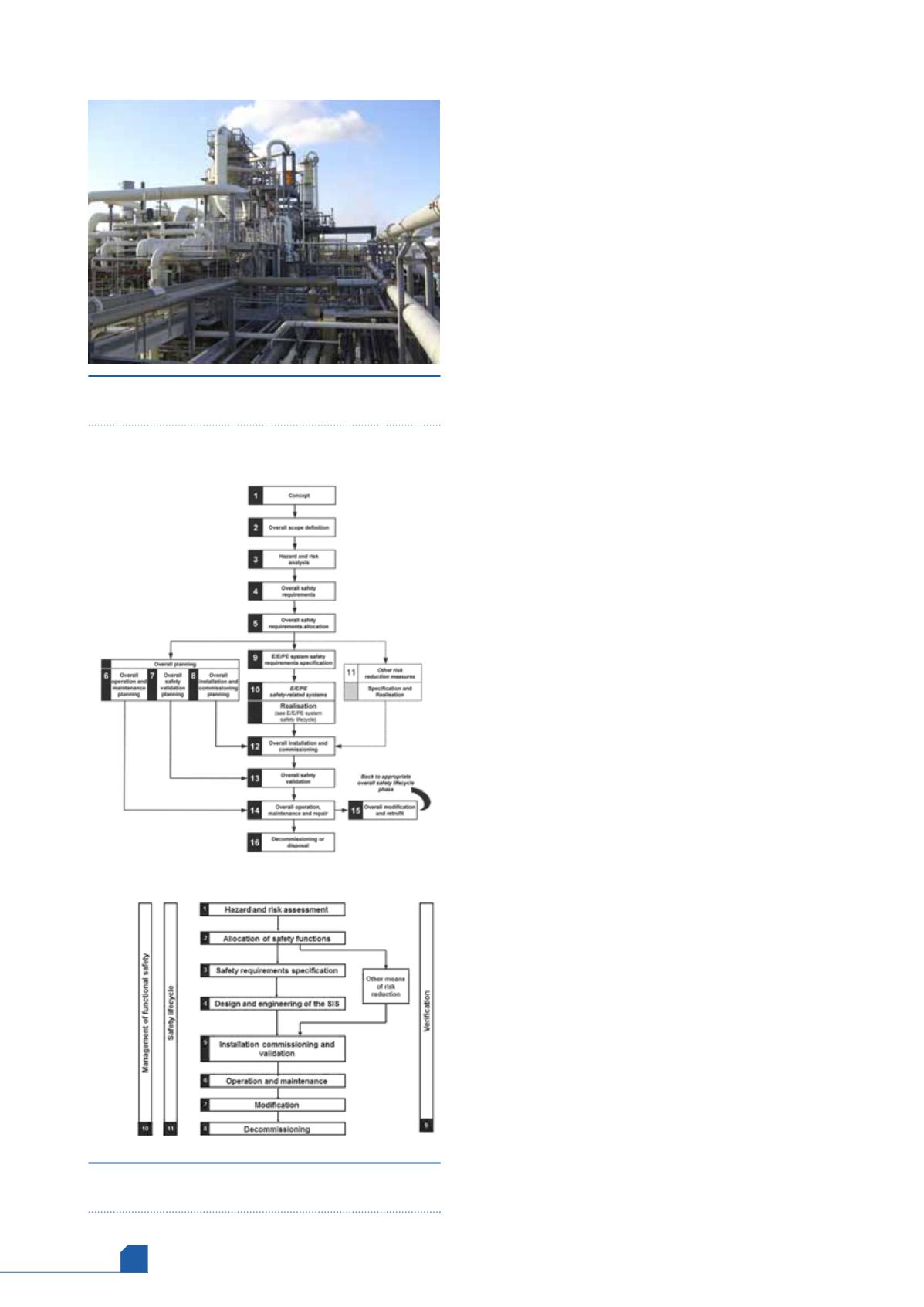
March
2017
HYDROCARBON
ENGINEERING
102
competence of those involved, etc. At this stage, great
care is taken when verifying the competency of those
involved, as required by Edition 2 of the IEC-61508
standard.
Site validation
There is no reason to assume that the need for
competency checks reduces the availability of when the
system goes to site. Multiple suppliers have their
equipment shipped to site, where the safety and control
cabinets are manoeuvred into equipment rooms,
connected, and powered up. Equipment room floors are
open to allow cables to be laid, although the power
supply is not always guaranteed. The situation may be
best recognised as ‘chaotic’. Wiremen, engineers,
commissioning engineers, systems integrator supervisors
and co-ordinators, end-user operators and technicians
are all present, and all require attention.
Normally, however, the overall installation is validated
and started up, with a typical duration from HAZOP to an
overall site validation of four or five years. For the majority
of this time the requirement for competent personnel is
fulfilled, although at this stage there is no ‘live’ danger
from the process.
After the overall site validation is completed by
personnel who (depending on the highest SIL level) are
independent, a statement that verifies that the system is
ready to be started up (Figure 1) is formally handed over to
the end-user.
Operational phase
At this point the hazards are introduced, which is the most
dangerous phase of the project. Engineers may predict
how a process will behave, but to really experience how it
behaves it has to be started up for the first time. Now, the
end-users from the site become more involved. They will
remain with the system after all the suppliers and
contractors have left, when the system is operational and
the dust has cleared. This operational phase may last for
15, 20 or 25 years, and will only be interrupted by planned
shutdowns.
During the overall site validation, attention would
have been paid to the personnel involved and, assuming a
pro-active auditor, to the competence of the site staff.
However, the IEC-61508 standard clearly dictates that
‘(re)training and (re)assessing’ is required. So, do the
personnel involved on site actually obtain all the
background information about functional safety? Do they
understand that this is a system that will protect them,
the environment and the process installation? Or will
they only see it as a limitation for system availability?
Much attention is paid to competency during the SIS
realisation phase (five years), but not enough is paid to
competency during the operational phase (20 years or
more).
Training for the operational phase
TÜV Rheinland recognised this situation and asked the
various course providers to set up a training programme,
especially for the people involved in the operational
Figure 1.
Typical onshore installations involving
functional safety systems.
Figure 2.
Overall safety lifecycle stages: (a) to
IEC-61508 and (b) to IEC-61511.
a)
b)








